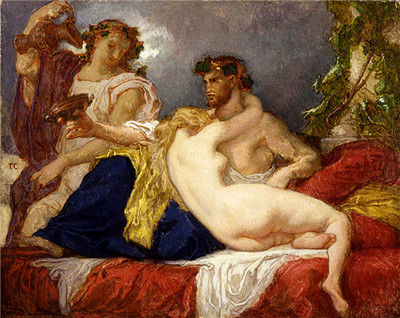6、Concubinage
納妾制度
A concubine in ancient Rome was slightly different from that of the traditional variety. First off, a man could only have one concubine at a time, and was not allowed to have a concubine if he was already married. In addition, the relationship between a man and his concubine had legal standing and was considered a step below marriage, though there werespecific legal differences.
古羅馬的妾侍跟傳統的妾侍有一點細微的差別。首先,一個男人只能有一個妾侍,但是如果他已經結婚了的話,那么他就不準再擁有妾侍了。除此之外,男人和妾侍這種關系是受法律承認的,而且人們普遍認為這是婚姻的某一步驟,但是在法律方面還是截然不同的區別。

In fact, most women who became concubines were only not wives due to social standing, or a man’s wish not to complicate the inheritance of his wealth due to a previous marriage. Children born from concubinage were considered illegitimate; however, the father was still expected to provide for them while he was alive. Also, the concubine herself was not elevated to the same social status as the man—as opposed to a wife—and she was banned from worshiping Juno, the goddess of marriage.
事實上,大部分成為妾侍的婦女不能成為妻子,不僅僅是因為社會地位,歸根結底還因為男人不想要先前的這段婚姻來混淆他們子孫的繼承財產的權利。妾侍生下的孩子是不被法律承認的;然而,法律依舊希望父親要在孩子活著的時候撫養他。同時,妾侍自身不會提升到與男人擁有同等社會地位的妻位上,她將不再受到婚姻女神朱諾的保護。













